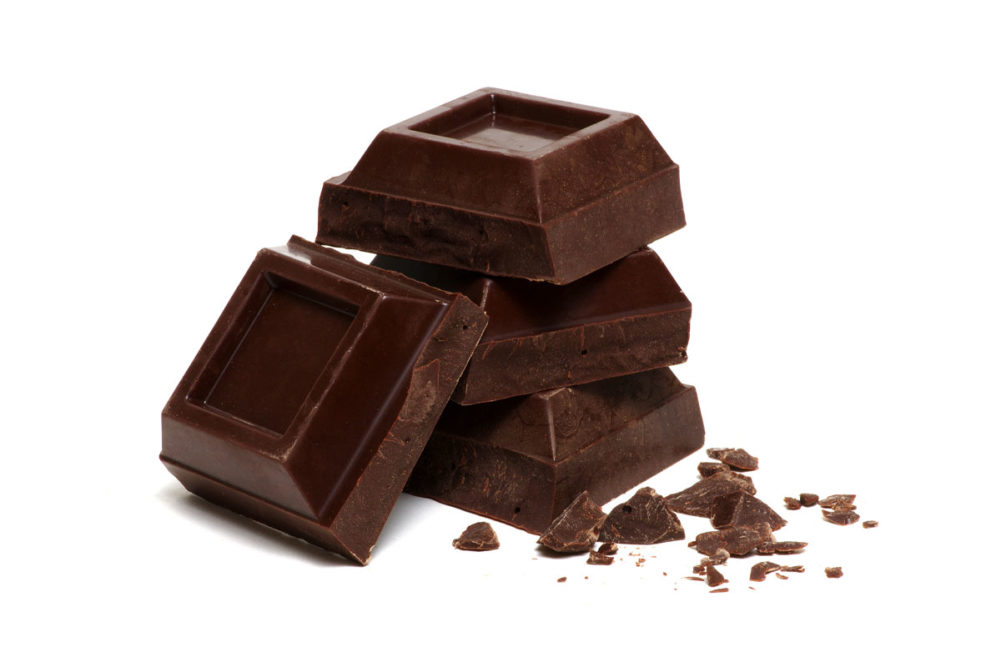NEW YORK — The Hershey Co. and Trader Joe’s both are facing class-action lawsuits concerning the levels of lead and cadmium in their dark chocolate products. The legal actions come after Consumer Reports in a Dec. 15, 2022, article found certain dark chocolate bars had levels of lead and cadmium above California’s maximum allowable dose levels (MADLs).
Both lawsuits were filed in the US District Court, Eastern District of New York. In both lawsuits the same four law firms represented the plaintiffs: The Sultzer Law Group PC, Milberg Coleman Bryson Phillips Grossman PLLC, Levin Sedran & Berman, and Leeds Brown Law PC.
California has MADLs of 0.5 micrograms for lead and 4.1 micrograms for cadmium. There are no federal limits for the amount of lead and cadmium most foods may contain, according to Consumer Reports.
“The California Office of Environmental Health Hazard Assessment (OEHHA) guidelines cited in the Consumer Reports study are not food safety standards,” the National Confectioners Association, Washington, said in December, adding the products in the article are in compliance with quality and safety requirements.
Neither Hershey nor Trader Joe’s had commented on the lawsuits as of Jan. 5.
The lawsuit against Hershey was filed by Christopher Lazazzaro, a consumer in the state of New York, on Dec. 28, 2022. It claimed “deceptive and misleading business practices” by Hershey for marketing and selling certain Hershey’s and Lily’s dark chocolate products and failing to disclose on the packaging that the products contained lead and cadmium.
The lawsuit stated that, according to California’s MADLs, Hershey’s special dark mildly sweet chocolate contained 265% of the MADL of lead, Lily’s extra dark chocolate 70% cocoa product contained 144% of the MADL for lead, and Lily’s extreme dark chocolate 85% cocoa product contained 143% of the MADL of lead and 101% of the MADL of cadmium. The lawsuit seeks a trial by jury and an amount in excess of $5 million, exclusive of interests and costs.
A lawsuit against Trader Joe’s, Monrovia, Calif., and T.A.C.T. Holding, Inc., the manufacturer and/or distributor of the products and the parent and holding company of Trader Joe’s, was filed Jan. 4 by Thomas Ferrante, a consumer in the state of New York. It claimed “deceptive and misleading business practices” by Trader Joe’s for marketing and selling certain dark chocolate products and failing to disclose on packaging that the products contained lead and cadmium.
Trader Joe’s dark chocolate 72% cocoa product contained 192% of the MADL of lead, according to the lawsuit, while Trader Joe’s dark chocolate lover’s chocolate 85% cocoa product contained 127% of the MADL of lead and 229% of the MADL of cadmium. The lawsuit seeks statutory damages per transaction and treble damages for the defendants’ alleged “knowing and willful violations.”
Barry Callebaut, Zurich, Switzerland, pointed out the Superior Court for the County of San Francisco on Feb. 14, 2018, established maximum concentration levels for lead and cadmium in chocolate products made available for sale in California. These maximum levels supersede the MADLs cited in the Consumer Reports article, according to Barry Callebaut.
“Through the Barry Callebaut internal surveillance program, we can safely affirm the compliance of our products sold in the US with the California consent judgment standards,” Barry Callebaut said.
Lead may be present in food because of the environment where foods are grown, raised or processed, according to the US Food and Drug Administration, which monitors and regulates levels of lead in food, dietary supplements and cosmetics. While it is not possible to prevent or remove lead entirely from foods, by law food manufacturers have a responsibility to implement controls to significantly minimize or prevent exposure to chemical hazards like lead, according to the FDA.
The FDA on April 27, 2022, issued draft guidance to industry on levels for lead in single-strength (ready-to-drink) apple juice and other single-strength juices and juice blends. The draft guidance called for an action level for lead in apple juice at 10 parts per billion (ppb), which was lower than the action level for lead in other juices at 20 ppb because apple juice is the most commonly consumed juice by young children.
The amount of lead, cadmium and other heavy metals in baby food has raised concern in recent years. A House subcommittee in the US Congress on Feb. 4, 2021, issued a report alleging baby food manufacturers were marketing products they knew contained “dangerous levels of toxic heavy metals.” The subcommittee found commercial baby foods tainted with toxic heavy metals such as arsenic, lead, cadmium and mercury. Toxic heavy metals endanger infant neurological development and long-term brain function, according to the subcommittee.





